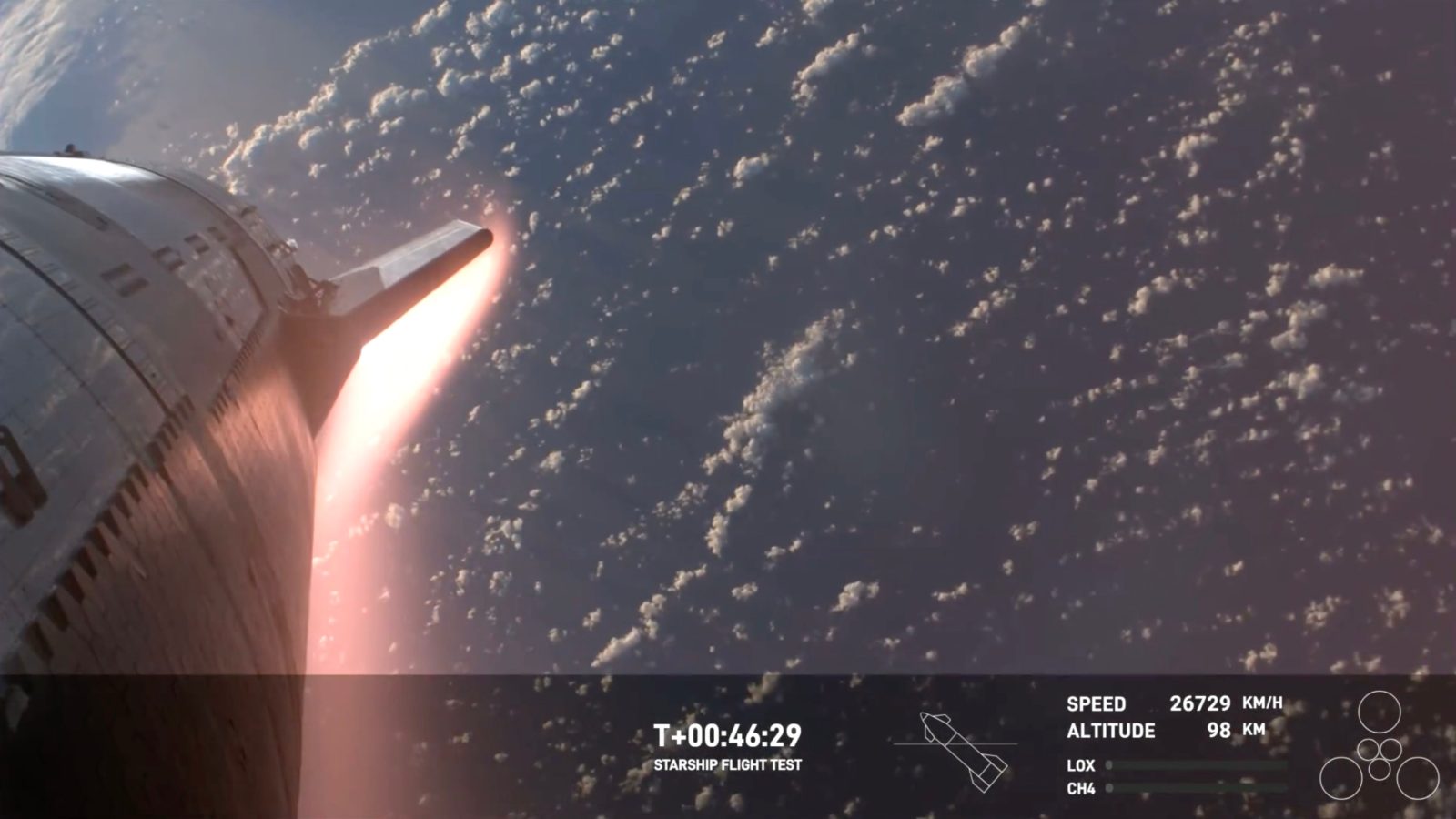
SpaceX completed its third Starship test flight early Thursday morning which ended as an almost 100% successful missions, meeting almost all of its goals. While the booster was lost prior to ocean splashdown, the more important part, the second stage, reached space and conducted several in-space tests.
Starship is now looking like a proper commercial launcher
Starship’s third test flight was a major step forward for the program as it made it further than it has before. Lifting off at about 8:26 A.M. CT from SpaceX’s Starbase facility in South Texas, the rocket completed all of its ascent engine burns, sending the Starship upper stage into a high flight path over Earth.
SpaceX gave a revised list of objectives for Starship’s third test flight which was to get through ascent, open and close the payload door, transfer propellent between tanks in flight, relight a Raptor engine in space, and gather data on the vehicle’s heat shield tiles. Right now we know that SpaceX was able to complete at least four of those objectives.
Ascent of Starship’s booster and ship (upper stage) performed nominally like flight two. However, the booster survived longer and performed a full boost back and attempted a landing burn. Sadly, the booster’s engines did not all relight which led to a hard crash into the Gulf of Mexico.
Ship 28, however, survived almost all the way through reentry. Completing its ascent burn, opening and closing its payload “pez” door, and completing the propellent transfer, the ship perform pretty much as well as you would hope on a test mission.
Two downfalls of Thursday’s test was an unknown status of Raptor relight in space and Ship 28’s breakup during reentry. However, the use of Starlink during reentry proved valuable as it was able to show live views during the beginning of reentry for what I believe is the first time ever.
As SpaceX has said many times, these Starship launches are only tests. The goal for each flight is to get further and do more than the previous one and when you compare it to Starship’s IFT-1, it’s almost a night to day difference.
It’s easy to look at today’s launch and see this flight as a failure. However, Starship is failing with intent to learn more. While development has been slower than expected and may cause delays to Artemis 3‘s launch, at this point Starship’s capability is real and will eventually fly operational missions one day.
Join our Discord Server: Join the community with forums and chatrooms about space!
What’s next for Starship?
SpaceX has four Superheavy boosters in various stages of final assembly with a few more Starship upper stages ready as well. However, this flight will most likely result in another mishap investigation from the FAA.
Luckily, when missions go mostly well, investigations as to what caused the failures take less time. It was about four months since that last Starship rocket flew so another few months, as long as the fixes are at a similar difficulty, could be expected.
The biggest question for Starship flight four will be if the company will want to launch with next generation Starlink satellites in the payload bay. This would probably mean SpaceX would fly Starship into orbit, rather than a modified profile like today’s that only took them to the Indian Ocean.
2024 has to be the year that Starship begins operational flights. Development of Starship is directly linked to development of NASA’s Human Landing System (as they are the same thing). SpaceX will need to prove to NASA soon that it can launch, refuel, and land a Starship HLS version on the lunar surface.
Thursday’s flight test as a major move in that direction and the next few missions I suspect will do the same. Discussions and rumors of Starship activity returning to Kennedy Space Center has picked back up and now that there’s a lower chance of a pad explosion, revisiting KSC launches makes sense.
FTC: We use income earning auto affiliate links. More.




Comments